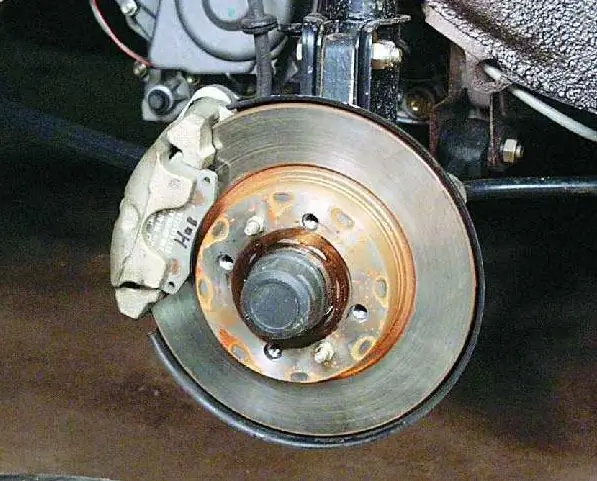- Author Maria Gibbs [email protected].
- Public 2023-12-16 03:05.
- Last modified 2025-01-22 17:48.
The main systems that ensure the safety of driving while driving are the steering gear and brakes. The maximum permissible wear of the hinges or brake pads is often the cause of road accidents.

Necessary
- - wrenches 13 and 17 mm,
- - jack,
- - "balloon" key.
Instructions
Step 1
It is necessary to check the condition of the brake pads during routine maintenance. To fulfill this condition, the car is placed on a level surface or lift.
Step 2
The procedure for checking the technical condition of the front brake pads begins with tightening the parking brake lever and installing wheel chocks under the rear wheels. Next, the front disc fastening nuts are released on the hub, and then, using a jack, the investigated part of the machine is installed on a rigid support.
Step 3
At this stage, the wheel is finally removed from the hub and a visual inspection of the brake pads is carried out. If the thickness of the linings is less than one and a half millimeters, then they are immediately replaced with new ones.
Step 4
To check the rear pads, wheel chocks are installed under the front wheels, and the parking brake lever is lowered all the way down. Then the bolts on the hub are also loosened a couple of turns, and after placing the machine on a rigid support, the disk with the tire is finally dismantled.
Step 5
If a technological hole is provided in the brake drum for visual inspection of the linings, then they are examined through it.
Step 6
In cases where the drum is solid, then two guide pins are unscrewed, which simultaneously serve as a fastener for it, after which the specified part is dismantled, opening up access for measuring the thickness of the friction linings, which should not be thinner than one and a half millimeters. Otherwise, the pads are replaced with new ones.






